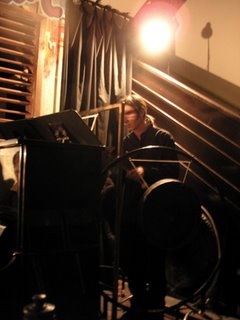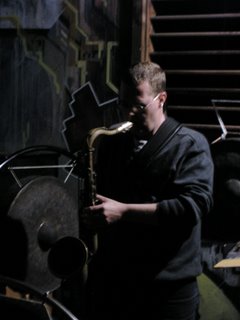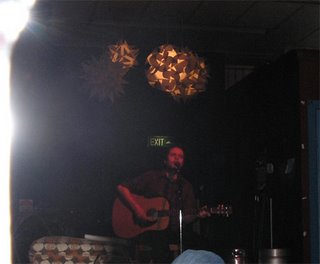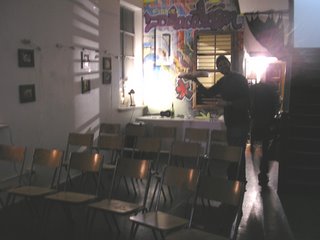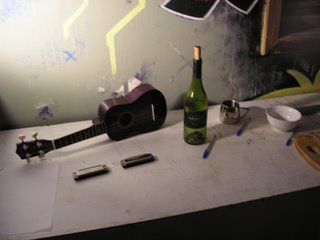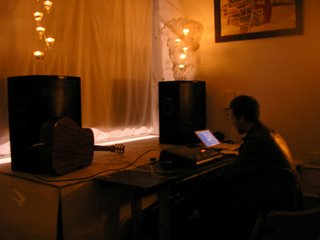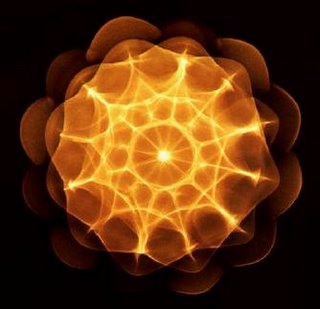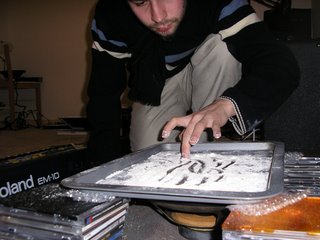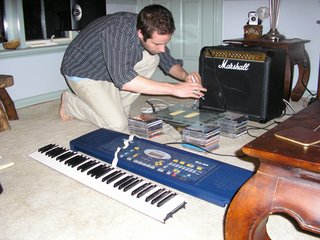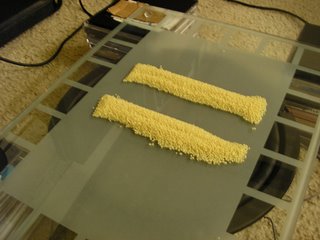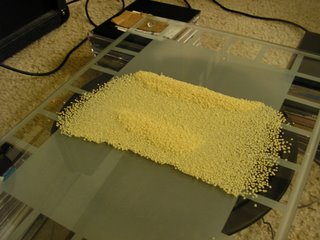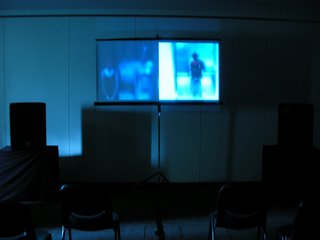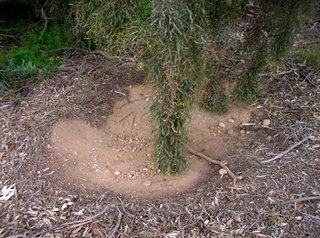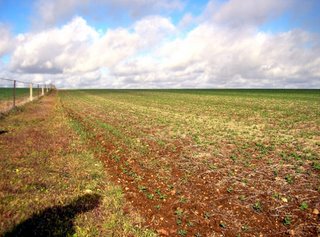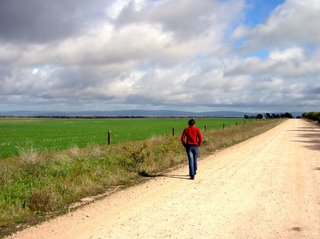I.
In my room I did a couple of experiments with feedback modulation of a fundamental sine wave - a process of fixing a microphone close to a speaker cone, raising the mic input to the feedback threshold and tweaking the EQ on a mixer. Through the speaker I played a sequence of single sine waves, starting with 110Hz then shifting 0.5Hz every thirty seconds. As it played back I wasn't necessarily interested in tweaking the EQ all over the place, I was more content with setting the EQ to a fixed position (so that feedback signal was consistent) and letting the periodic shift of frequency of the sine waves do the modulating. There were some very interesting results - pulse patterns and harmonics shifted in and out of phase with each other as the fundemental frequency shifted away from the EQ presets. I'll be doing more tests tomorrow as there are some acoustic phenomena that remain unclear (the room's resonant frequency may be playing a part as well - I'm not sure.)
II.
I then moved my gear out into the Shultz staircase and played some sine and square waves into the space. It was really just a bit of fooling around. In such a resonant area as a stairwell, high-ish frequencies such as 880 - 1200 Hz are suited best as they are reasonably directional and capable of being reflected through the staircase, opposed to a lower frequency which just oozes all over the place. Tomorrow I may explore the prospect of using two sine waves, seperated by a couple of floors and tuned slightly apart from each other - say 1100 and 1123 Hz.
III.
I took the latter idea into the EMU performance space next, pairing a fundamental frequency of 880 Hz with a modulating frequency of 881Hz which shifts by 1 Hz every thirty seconds. As these waves were played into the space, I went over to the Steinway piano and played A5, B5 and C6 notes, observing how the richness of the piano's harmonics caused the sine waves to heterodyne and spin off in various directions. This is a method explored by Alvin Lucier in many of his works, specifically Still and Moving Lines In Families Of Hyperbolas (1973-4) and Wind Shadows (1994).
So, an exiciting day of practical activity, more tomorrow (and some pictures.)


